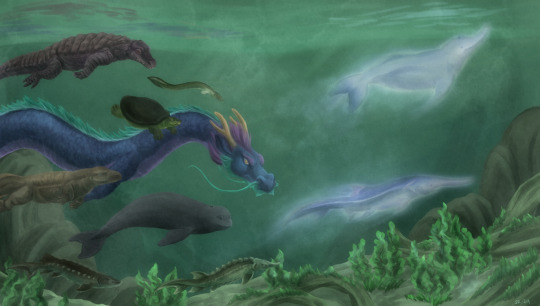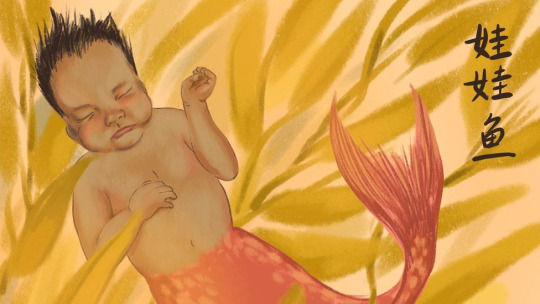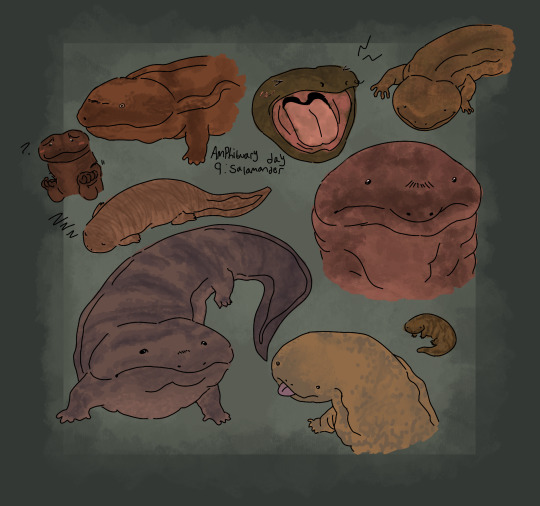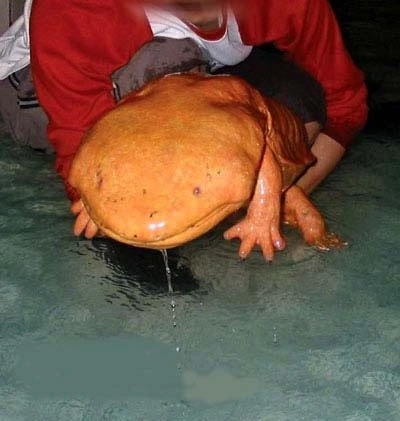#chinese salamander
Text

Amphibiuary day 16: Swim!
#stop pussy footing around it- are you coming to my Chinese giant salamander’s bat mitzvah or not?!#jk#I love these huge guys! so silly#amphibiuary2024#chinese salamander#chinese giant salamander
106 notes
·
View notes
Note
Wyrm who lives under a log like a salamander

#67 - 娃娃 (wáwá / doll) - Easily mistaken for an actual salamander. 🦎🪵💕
#ivy-eats-leafs#daily dragon drawing#ask and you shall receive :3#art#art challenge#artists on tumblr#chinese artist#dragon#dragon a day#dragon art#dragon oc#dragons#daily drawing#daily dragon#chinese dragon#drawing challenge#drawing every day#drawing#illustration#year of the dragon#fantasy creature#creature design#zodiac#wyrm#salamander#salamander wyrm#salamander dragon#lizard#reptile
1K notes
·
View notes
Text

Yangtze spirits
#dragon#baiji#chinese paddlefish#sturgeon#chinese sturgeon#yangtze sturgeon#yangtze finless porpoise#porpoise#yangtze giant softshell turtle#turtle#chinese alligator#japanese eel#chinese giant salamander#wildlife#endangered#extinct#art#artblr
122 notes
·
View notes
Text

The holy mother and child
#I fuckin love viceroy/casey#chinese giant salamander looking ass#rose also has such a shitty lil glare. love it#rose lalonde#casey the salamander#viceroy bubbles von salamancer#homestuck#hs#my art
577 notes
·
View notes
Photo

Amphibiuary Day 16: Giant
A giant salamander, just walking down the road
#amphibiuary2023#salamander#chinese giant salamander#i think#i wanted to play with the perspective to make him seem even taller#and I think it worked :)#my art
223 notes
·
View notes
Text

LOOK AT MY BOY!
#mod art#rotomblr#pkmn irl#Quagsire#ooc: referenced off a pic of a guy holding a Chinese giant salamander
20 notes
·
View notes
Note
Chinese giant salamander with small salamander on its head?

day 933
607 notes
·
View notes
Photo



A Big Round of Applause for the Chinese Giant Salamander
The Chinese giant salamander (Andrias davidianus) is one of the largest amphibians in the world, second only to the South China giant salamander (Andrias sligoi) which was only recently distinguished as a separate species. This species typically weights 25–30 kg (55–66 lb) and is 1.15 m (3.8 ft) in length, although It can reach up to 50 kg (110 lb) and 1.8 m (5.9 ft). Its anatomy is well-suited to its aquatic lifestyle; the broad, flat body allows it to creep along riverbeds, and its wide mouth allows it to gulp down any prey it might come accross. Their eyesight is very poor and as a result the eyes themselves are small. A. davidianus‘s skin is typically dark to blend in with its surrounding, and the excess wrinkles provide more surface area through which it can absorb oxygen from the water.
As their name suggests, the Chinese giant salamander is found only in China; specifically fragmented areas from Qinghai to Jiangsu and south to Sichuan, Guangxi and Guangdong. This species is entirely aquatic, and thus is most often found in the basins of the Yangtze, Yellow and Pearl Rivers. A. davidianus lives in caves or freshwater crevices, although they are also seen along lakes or open rocky riverbeds.
Part of the reason this species is so large is because they grow throughout their entire lives. Chinese giant salamanders start out as eggs, which are hatched in groups of 400-500 laid in slow-moving underwater cavities. The eggs are quite large, at a maximum size of 14–16 mm (0.55–0.62 in) after they’re laid and habe absorbed water. They take 50-60 days to hatch, and larvae emerge already resembling their parents, albeit with external gills, and are already 3 cm (1.2 in) long. The young are independent, although they typically stay in the stream they were hatched in until they’re fully grown. The gills are lost at 3 years old, although sexual maturity isn’t reached until 5 to 6 years and a length of 40–50 cm (16–20 in).
Mating occurs between mating occurs between July and September, when the water temperature reaches 20 °C (68 °F). During this time, males push sand and gravel out of their dens to clean them-- a process that can take up to a week-- and ‘shower’ regularly by moving under fast-moving currents. Females are attracted to clean dens, and once she chooses a mate the pair engage in a number of courtship behaviors including knocking bellies, leaning side-to-side, and cohabitating. After the female lays her eggs, she leaves and the male guards the eggs until they hatch. Individuals as old as 60 have been recorded in the wild, although few individuals survive past the larval stage.
Chinese giant salamanders have few predators as adults. The most common are otters, red foxes, weasels and hog badgers, although juveniles can also fall prey to large fish or even adult salamanders. To deter predators, A. davidianus secretes a white acidic, sticky substance from its skin. For the most part this species is the apex predator of its ecosystem, and feeds on insects, smaller amphibians, crustaceans, fish, and the Chinese water shrew (Chimarrogale styani). Individuals detect their prey by a combination of detecting chemicals in the water and a series of nodes along the sides of their bodies that sense vibration. When prey is located, the salamander creates a vaccum with their mouths, sucking in water and their meal.
Conservation status: The Chinese giant salamander is considered Critically Endangered by the IUCN. Primary threats include habitat loss, disease, and over-harvesting for meat. National and international conservation programs and zoos are working to raise awareness, conserve habitat, and raise captive-bred salamanders for re-release in the wild.
Extra fun picture for Chinese New Year:

This picture is from a series of paintings by artist Frankie Huang, who depicts a number of Chinese words literally. In this piece, the Chinese giant salamander is shown as the literal translation of its name in China: Wawayu, or ‘Baby fish’. This name comes from the salamanders’ distinct vocalizations, which can often sound like crying babies.
Photos
Theodore Papenfuss
Egon Heiss
Ben Tapley
Frankie Huang (Instagram)
#chinese giant salamander#Urodela#Cryptobranchidae#giant salamanders#salamanders#amphibians#mountains#caves#rivers#freshwater fauna#subterranean fauna#asia#east asia#animal facts#biology#zoology#happy Chinese New Year!#(ik im two days late but i was moving out of my apartment)#(again)
207 notes
·
View notes
Text
when agitated, clodsire and quagsire secrete a sticky white ooze that can act as an irritant. however, this secretion can also be used for something else: medical glue.
current research suggests that the secretions emitted by these species may well be a more viable alternative to stitches, staples, and other medical adhesives used by doctors and surgeons. a compound derived from this secretion tested on lechonk and rattata overall appears to promote rapid healing and limit scarring and inflammation during the healing process.
#pokémon#pkmn irl#.txt#clodsire#quagsire#[this is legitimate research into the chinese giant salamander complex. not sure where it stands currently.]#[but it’s interesting to read about if you’ve got the time.]
39 notes
·
View notes
Text

This was supposed to be yesterday's amphibian but I didn't finish him until just now. The prompt was 'dragon', so I drew a water dragon based on a Chinese dragon and a Chinese giant salamander.
[ID: A digital painting of a Chinese dragon/Chinese giant salamander hybrid swimming underwater. /ID]
#art#digital art#dragon#salamander#water#underwater#amphibuary#amphibuary2023#Chinese giant salamander#Chinese dragon
112 notes
·
View notes
Text

Chinese Giant Salamanders are silly and fun.
@cozy-fish-crow and I were laughing about this last night, so I had to make it a thing xD. based off this YouTube video
#for context: these buds are muddling up the definition of species for biologists and are really good at interbreeding both in farms#and in the wild#watch the vid if you haven't cause it does a better job of explaining than I do :3#chinese giant salamander#animals
15 notes
·
View notes
Text

Amphibuary day 9- Salamander! Giant Chinese salamanders are one of my *favorite* amphibians- they’re so cool! Here’s a bunch of em’!
320 notes
·
View notes
Text
btw happy fact, pandas aren't endangered anymore.
woo!!!!
now we can put more love and attention ON CHINESE GIANT SALAMANDERS PLEASE I NEED AN UPDATE.
you can't just drop the lore that "oh yeah DNA testing shows theres like 5+ different species lolzor" AND THEN DISAPPEAR FOR LIKE 3 YEARS. (link -> salamanders)
PLEASE I CARE TOO MUCH ABOUT THEM
they are so endangered man, please
9 notes
·
View notes
Text

(Ice Coffee Salamander)
I did a redraw and like

WHAT HAPPENED?!????
#art#my art#original character#character design#art redraw#ice coffee#giant chinese salamander#salamander#furry???#amphibian???#idk#bro is vibing ]
10 notes
·
View notes
Text

i just learned chinese giant salamanders exist and um??? look at himb???
3 notes
·
View notes
Text



giant salamanders are some of my favorite herps
#i drew these on the back of a peer review for communications lmfao#.png#japanese giant salamander#chinese giant salamander#cryptobranchidae#herpetology
79 notes
·
View notes